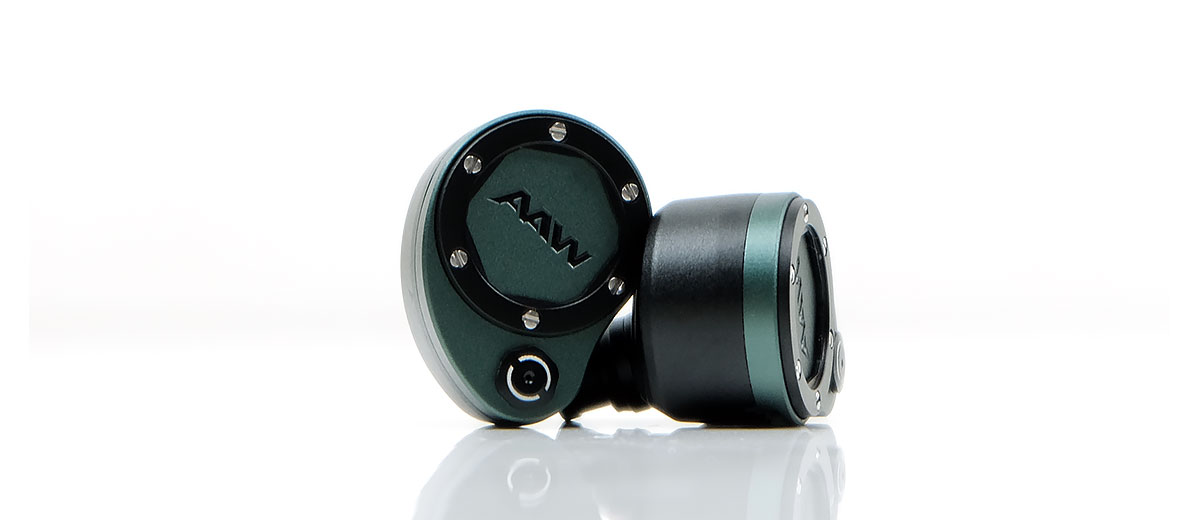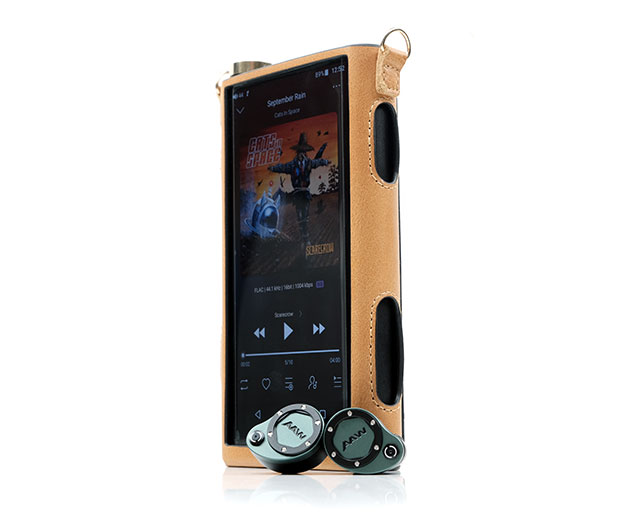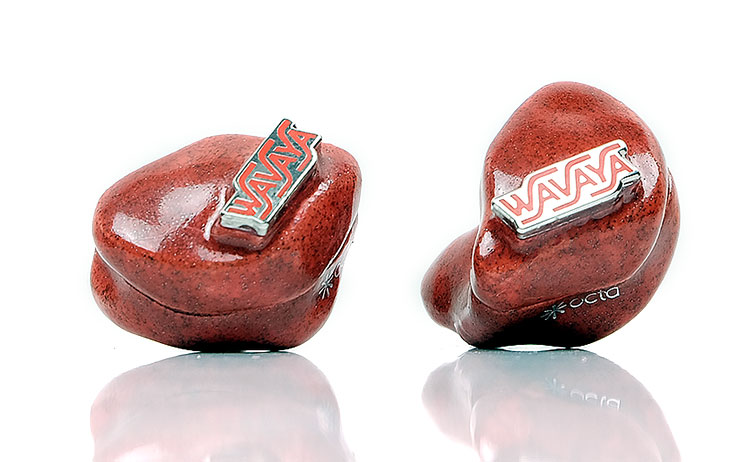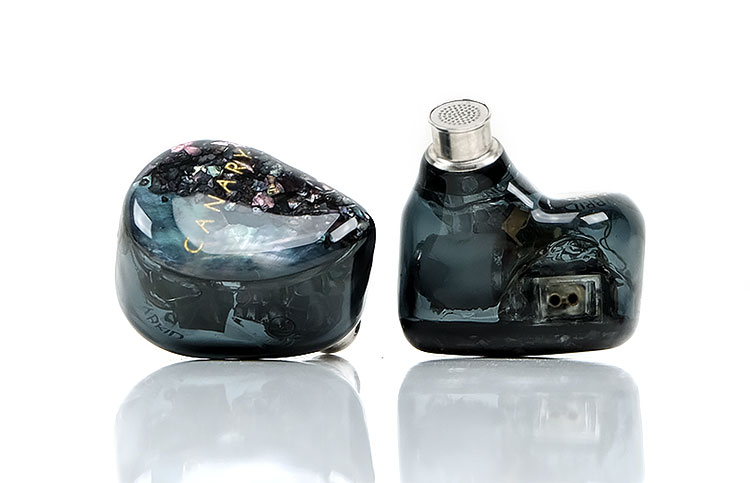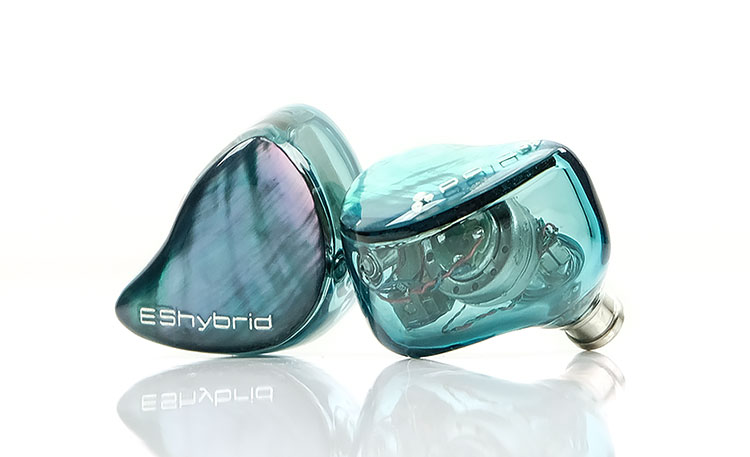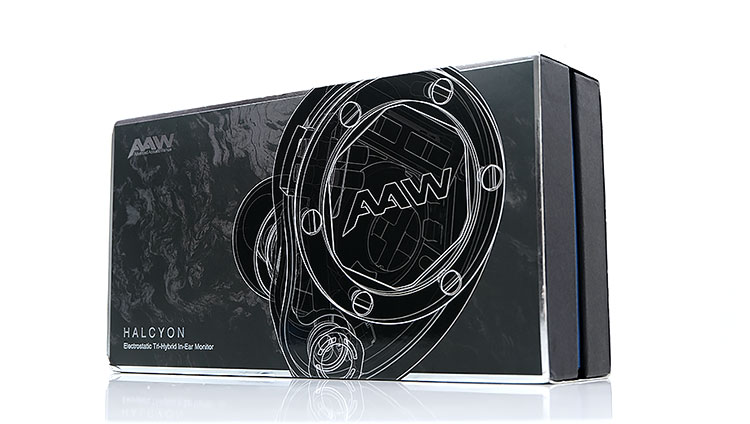AAW Halcyon Sound Impressions
Summary
With filters and tip recommendations, the Halcyon has a bit of a chameleon-like presentation so it is better to start with the ‘norm’ filter which is halfway between the Bass and Vokal filters in terms of sub-1k dB presence.
This is a colored and slightly V-shaped curve with an emphasis on the sub-to-midbass to around 200Hz, a 1-3k forward elevation in the mids, and a dominant lower-treble with a slightly softer upper treble.
The Halcyon has all the hallmarks of a tuning designed to ‘tickle your fancy’ if you are into modern pop, EDM, and synth. That means a planted and powerful low-end, forward vocal presence and percussion passages as well as an airy treble delivery with plenty of headroom.
All the key areas your ear tends to pick up on are to the fore so I would term it as a highly contrasting, or an exciting type of presentation rather than a reference or laid-back sound.
Sub-1k it inherits a bit of warmth but not too much due to a 200Hz to 600Hz drop into the lower mids. Lower-mids instruments tend to sit behind vocals and exude that typical V-shaped contrast of sub-bass power and ethereal electrostatic upper order harmonics.
Instrumental timbre beyond 1k is to the light and airy side with a clean overtone but not a hard-edged attack or naturally sibilant.
Staging
The Halcyon does quite well for staging with excellent headroom and an airy treble from those quad-electrostatic drivers. The depth is particularly good also, especially when you up the bass levels using the filters.
What impresses me the most is how the Halcyon electrostatic treble can deliver a clean treble without sounding overly forced and peaky. However, poor tip choice and a bright source can at times draw too much attention to anything crossing that 5-6k elevation and that is where I tend to PMEQ or tip roll to introduce a more liquid overtone.
In terms of imaging vocals are to the fore, lower-mids instruments to the rear with anything below 200Hz leveling out with the vocal positioning. Treble is more forward at 5-7k compared to 8-10k so percussion and high-pitch synth notes can resonate a little louder.
‘Bass’
If you are buying the Halcyon to let rip on the low-end then the bass filter is likely going to be stuck on the drivers permanently. It also applies if you like a little more meat on the instrumental bones up to 1k.
The bass filter will give you about 5-6dB more than the Norm filter and around 8-10dB more than the Vokal filter but it is not strictly a cut-off at say 200Hz where the majority of the changes are felt.
This is a venting filter on the dynamic driver so its tweaks are right up to the first crossover into the BA at around 1k. That means a little more warmth creeping up into the lower mids with a bit more body and presence. These filters, combined with the Final E tips, are my go-to on the Halcyon for the majority of my electronic music.
‘Vokal’
The Vokal doesn’t really flatten the low-end, rather it attenuates more than either of the two other filters sub-100Hz so you get less sub-bass presence and power. This, in turn, leaves a slightly cooler sound signature with a bit more mids and treble dominance. You get less of a low-high contrast, less staging depth, and overall a slightly brighter sound.
You can mitigate this with the foam and SpinFit tips which amplify a bit more warmth and body into the Vokal sound so that voicing, whilst clean, is not harsh or unnaturally sibilant sounding. It still misses some critical depth for me so strictly one for mids fans who do not need a heavy low-end.
Stock Tips
Switching from the stock single bore silicone to the stock foams will introduce a mild upswing in warmth in the instrumental timbre and voicing. Combined with a slight attenuation of the treble presence the foams produce a sweeter overtone in the Halcyon compared to the silicone tips.
If you are planning to stick with the norm filter and stock tips the foams have a better harmonic balance for me. The silicone tips tend to sound too lean, especially in the mids where those BA drivers above 1K need a bit more support.
Final E Tips
Using SpinFit and Final E is where the Halcyon really can show what it is capable of. The Final E tips are the cooler, higher contrast sounding of the two tip choices with an immediate upgrade in the Halcyon’s sub-bass slam and definition compared to the stock silicone. Treble also sounds clean and airy and also more refined with that slight edge in the attack gone for me.
The only caveat with Final E is the lack of presence or body in the mids which the stock foam tips have a slight edge on, (SpinFits also). Final E’s, therefore, tend to be better with EDM and synth where midrange instrumental weight is less critical. They are also a blast to use with the bass filter and far more potent sounding than the stock silicone tip performance.
SpinFit Tips
The SpinFits are more balanced sounding with a blend of warmth and upper mids sweetness in the timbre and the ones I recommend using with the Halcyon for the widest genre applicability. They tend to sound airier than the foam tips but nowhere near as shallow as the stock silicone or as aggressive and high contrast sounding as the Final E.
Overall, a smooth-sounding tip roll and one that I would recommend using in conjunction with the Vokal and Norm filters where the low-end is not so critical an experience. These filters tend to bring out a bit more midrange and treble presence where that slightly warmer effect of the SpinFits helps flesh out the resulting sound better than the stock silicone tips.
Synergy
Efficiency
The Halcyon is rated at 24Ω and 104dB SPL. That sounds about average and certainly not the most sensitive of ratings. In fact, with the Lotoo PAW Gold Touch in balanced low-gain, I was running the Halcyon just marginally lower than the Canary which is rated at 16Ω and 100dB.
Before you say, “oh I thought gen 2 transformers made the Halcyon electrostatic drivers more efficient?”, you do have to remember this is one transformer and 4 e-state drivers, not ‘1 and 1’ or ‘2 and ‘2 so that’s the payoff right there in terms of efficiency.
Truth be told, I did find myself going for either a stronger balanced output or a higher gain setting in our tested DAPs with the Halcyon. That additional headroom and better current, (volume) control felt more natural and or a better fit for the Halcyon. That included the E02/N6ii pairing, Lotoo’s PAW Gold Touch/6000, as well as the FiiO’s M15.
The flip slide is no noise. The Halcyon painted a perfectly black background on every DAP we tested, balanced, and unbalanced. It has impeccable control of regular source noise floors which does not surprise me gives its 104dB SPL.
Pairings
There was one very clear winner with source pairings and that was the Hifiman R2R2000 Red Edition. Let us push back a bit from that headline statement to explain why.
I had expected the Halcyon to sound top-dog with the Lotoo PAW Gold Touch and it does come a close second but for a little uptick in the treble that creates a little too much emphasis. You can PMEQ this by 1-2dB around 5-6k and it sorts it out though.
Cayin N6ii/E02
Switching to the Cayin E02 and E01 gave me a more liquid sound without losing the treble brilliance, however, it was never a home run. The odd time I got a brittle treble synth run or percussion that did not sound quite right.
Stormzy’s excellent ‘Gang Signs & Prayer’ album has a few tracks such as Bad Boys which has that digital snare brush effect that can sound a shade too emphasized on the Halcyon. You can adjust for this with the foam stock tips which do add some welcome body and a more liquid tone to the Halcyon’s upper mids.
FiiO M15
The FiiO M15 works better with the bass filter on the Halcyon. It is just too reference and safe sounding with the Norm filter on what is already a fairly neutral-sounding player.
Throw in that additional Bass filter and Final E tips and it is a lot more fun. And no, the treble does not become glassy or brittle sounding on the M15. The excellent treble articulation makes this more of a ‘hi-fidelity’ pairing.
Hifiman R2R2000
This brings us full circle to the Hifiman R2R2000 Red Edition. The R2R2000 Red introduces a bit more warmth, much like the Cayin and Lotoo’s PAW 6000 but at the same time dramatically expands the mids on the Halcyon producing a beautifully textured vocal delivery and some excellent low-end power.
However, what I like most is how it adds a little sweetness to the Halcyon’s treble without diminishing its headroom or clarity. Combine this with SpinFit tips and you not only get a very immersive sound but also perhaps the most natural pairing of the tested DAPs.
Select Comparisons
Wavaya Octa
€1590
Technical
The Octa is also an electrostatic hybrid though this version is a custom format as opposed to universal. What makes this an interesting comparison is that for similar money the Octa also uses a quad-electrostatic driver configuration with 8 drivers in total though a gen 1 dual transformer design.
Also, whilst the Octa is a hybrid it is not a ‘tri-brid’ with Wavaya electing to use BA and electrostatic whereas the Halcyon uses dynamic, BA, and electrostatic.
The configuration inside the Octa is also a little unusual. The double driver for the low-end is a full range plus woofer with its own crossover covering the sub-to-midbass range. You then have a super double tweeter for the mid to upper mid frequencies and another full-range cover the upper bass to lower-mids. The electrostatic drivers are for the highs and super highs.
AAW keeps it much simpler for the Halcyon with a 4-way splitting the mids into 2 groups, then the lows and the quad electrostatic for the highs. The other big difference is the use of the BassFlow Control system on the Halcyon allowing you to adjust the level of low-end by up to 10dB. With the Octa, the FR is fixed.
Design
I won’t comment much on the design comparisons as one is custom and the other is universal. The Octa is supreme for fitting and looks gorgeous whereas the two-tone Halcyon could do with better tips such as SpinFits or Final E but it is much smaller and lighter than the unique porcelain finish of the Octa.
Both have good cables, the IPX terminated Linum™ G2 Super BaX™ cable is very light and I do love those easy insert and detach IPX sockets. The Hera on the Halcyon is a little heavier but a very attractive 2-pin 0.78mm military green design with a high-end 1.2m 24AWG UP-OCC Cryo-silver Litz Type 5 wire.
Performance
The Octa is rated at 19.5Ω and 100dB SPL and the slightly harder of the two to drive in terms of current on paper. However, in real world testing the Halcyon was actually more demanding for current by a good 10 steps in low-gain on the Lotoo PAW Gold Touch.
Neither are overly sensitive to high noise floors so you get a black background on output stages from the FiiO M11 and Cayin’s E02 pairing.
In terms of tuning, you can tell right away which IEM has the dynamic driver, the timbre is just different, (Norm filter mode). The Halcyon reaches much deeper and sounds the more powerful of the two IEMs, especially with the bass filter inserted. Even with the ‘Norm’ filter, however, the Halcyon is the heavier hitter.
The Octa, however, has a much more dominant midrange presence with a slightly smoother vocal delivery. The Halcyon’s treble extends further and has more of an electrostatic timbre for me. That means cleaner, more energetic but still lacking in harshness or unnatural sibilance. Mids to upper mids instrumental weight is a little leaner than the Octa’s warmer midrange.
The relaxed liquid nature of the Octa quad-electrostatic is more symbolic of how much harder it can be to drive those gen 1 transformers. I still love the timbre mind you, I think Wavaya got the balance right but nevertheless, the treble comes in secondary to the excellent BA mids tuning.
Staging
Staging is more depth and headroom for the Halcyon and width to the Octa. The Octa paints a wider but shallower soundstage with the majority of its focus around the 1k marker and a slow attenuation starting around 100Hz.
The Halcyon’s Vokal filter will suck a little depth out of the presentation but it still sounds a bit firmer on the low-end due to that dynamic driver timbre.
AAW Canary
SG$2,999
Technical
The Canary is still AAW’s flagship monitor and like the Halcyon, it uses a 7-driver hybrid configuration with dynamic, BA, and electrostatic drivers.
Unlike the Halcyon, it uses a gen 1 transformer and a quad electrostatic group for the top-end, 4 BAs for the mids, and a smaller dual-diaphragm 6mm push-pull isobaric woofer (dynamic). The Halcon uses only 2 BA for the mids but a larger 10mm graphene diaphragm woofer for the low-end.
The other key difference between the two is that Halcyon’s BassFlow system allowing 3 different sound signatures. The Canary FR, like the Wavaya Octa, is fixed with no filter system.
Design
The Canary has a more ergonomically agreeable custom universal acrylic and stainless-steel design. The Halcyon’s militaristic green/black anodized CNC Machined aluminum body is a starker contrast to the Canary’s more exotic turquoise Pearloid and flake finish.
The Canary is technically the larger of the two bodies but lighter and smoother to the touch and ear whereas the Halcyon is robust and heavier.
Both have similar tips with a single silicone and foam and I would recommend the foam for both if you are going to stick with the stock tips. For 3rd party, I would go SpinFit with the Halcyon and Final E for the Canary.
The Canary has the better midrange and can handle the slightly V-shaped nature of the aggressive Final E whereas the more balanced and slightly warm SpinFit tone on the Halcyon was my preferred option.
Both have excellent cables with the Canary using a Null Hakone 1.2m 26AWG UPOCC Litz silver/copper wire and the Halcyon using a Null Audio Hera 1.2m 24AWG UP-OCC Cryo-silver Litz Type 5 wire.
Performance
The Canary is rated at 16Ω and 100dB compared to the Halcyon’s slightly more efficient 24Ω and 104dB SPL. In truth, there is only a marginal volume tweak between these two using our reference Lotoo PAW Gold Touch balanced output. Bearing in mind the Halcyon is using a quad-electrostatic array and one transformer I would say that’s a job done well.
On their own, however, they do need a bit of juice with both easily in the upper echelons of the Lotoo’s low-gain current demand but neither are hiss merchants with a nice black background.
In terms of tuning, the Halcyon Norm setting has a peppier top-end with what I would say is more of an electrostatic sparkle and a bit more extension. The tuning on the Halcyon treble brings that out a bit more with that 5-6k lower-treble bump that adds some zip to percussion and higher pitching instrumental harmonics.
Whereas, the Canary has a wetter and more subdued lower-treble but more body and texture in that quad-BA midrange, especially more forward vocals that show off a lot more complexity and resolution.
The Halcyon throws its weight around on the low-end but using the ‘Norm” filter it’s fairly even with the Canary power. The Canary seems to have a bit more sustain into its mid-bass than the Halcyon ‘Norm’ tuning and in turn, adds more warmth and body into the lower mids. The definition or textural detail on the Canary low-end is also a bit tighter than the Halcyon’s bass.
The Halcyon with the Bass filter will up the sub-bass by 7-8dB and you will hear a bit more weight and power right at the low-end compared to the Canary. The Vokal filter will drop it right down and place the mids more to the fore, especially female vocals.
Shozy & AAW POLA39
$950
Technical
The POLA39 is the revised edition of the original hybrid POLA. Like the Halcyon, it is an electrostatic hybrid but unlike the Halcyon, it uses two different drivers and not 3.
The POLA39 uses a proprietary 10mm dynamic driver combined with a dual gen 1 electrostatic array and AAW’s TrueXross 2 Way Crossover. There are no BA drivers inside the POLA39 so the mids are covered by that 10mm driver.
Design
Both come in universal or custom format but both samples we have here are universal. The POLA39 follows the form factor of the Canary so that is a smaller exotic mix of Mother of Pearl faceplate, translucent main shell, and a stainless-steel nozzle. Again, a stark contrast to the green/black 2-tone anodized CNC machined finish of the Halcyon.
AAW has done a very good of keeping the Halcyon from being edgy but acrylic smoothness is hard to beat. The POLA39 is also lighter and fits slightly better in the ear due to its custom universal contouring.
Tips still play a role for these two universals with the Halcyon doing really well with 3rd party tips such as SpinFits but in terms of stock, both monitors suit the foams compared to the supplied silicone tips.
As with any AAW collaboration or in-house product, the supplied cable is excellent on both. The Halcyon Here 24AWG UP-OCC Cryo-silver cable, however, is a step up on the POLA39’s more entry-level aftermarket Null Audio Symphonym Tiburon 26AWG UP-OCC Copper Cable Litz 4-wire.
Performance
The POLA39 is rated at 12Ω and 101dB SPL so a little behind the 104dB SPL of the Halcyon. The POLA39, despite only having 2 electrostatic drivers, is the harder of the two monitors to drive on our reference PAW Touch DAP in low gain.
Neither have ‘hiss issues’ so they are not super sensitive but you do feel the POLA39 could do with a bit more power whereas the Halcyon bounces along quite nicely.
In terms of tuning, the Halcyon is a definite energetic upgrade. It takes everything I like about the POLA39 and improves on it. That means more treble detail and expansion, a more vibrant midrange/vocal presence, and most importantly, palpable sub-bass weight. That is with the Norm filter so things can always get more colored with the other 2 filters.
The Vokal filter takes the Halcyon closer to the POLA39 bass experience by thinning out the low-end but it has a cleaner and more forward founding midrange and vocal presence. The Bass filter destroys the POLA39 in terms of a powerful sub-bass presence and a better instrumental fundamental.
Staging on the Halcyon is deeper and taller with a stretched front to back soundstage for the mids and vocals that are slightly more to the fore than the POLA39. Not that the POLA39’s vocals lack presence but rather they are not quite as odd-harmonic lifted with less of an upper-mids and lower-treble rise compared to the Halcyon.
Our Verdict
The AAW Halcyon is a presentation of possibilities. The use of a filter system combined with the dramatic changes with 3rd party tips makes a tricky monitor to pin down to one definite sound.
It does have a core signature in there and it is more to the ‘fun’ side of things than something reference-based. That means an emphasis on a stronger bass line to compensate for the excellent electrostatic articulation and a performance that is high in contrast. It is entirely suited to modern music and in particular synth wave which loves to go high and airy.
Change the tips though, the stock tips hold it back a little for me and maybe the source of mixed feedback on initial impressions. A good 3rd party tip such as the Final E will add a lot more ‘bounce for your ounce’ whereas the SpinFits seem to offer a more balanced and smoother performance. The stock foams are also useful for treble shy users at a pinch.
Overall, I am excited to see what AAW can do with the 2nd gen transformer solution if they decide to move this up a gear into any new flagship hybrid. The Canary is still number 1 for me but the Halcyon does seem to point to a lot of new potential.
AAW Halcyon Technical Specifications
- 7 Driver Tri-Hybrid Design
- Quad Electrostatic Super Tweeter
- Dual Precision Balanced Armature Driver
- 10mm Graphene Diaphragm Woofer
- 4 Way Passive+Acoustic Crossover
- Aerospace-grade Aluminum Enclosure
- Frequency Range 10Hz to 100kHz
- Sensitivity 104dB THD < 0.5%
- Triple Sound Bore Design

